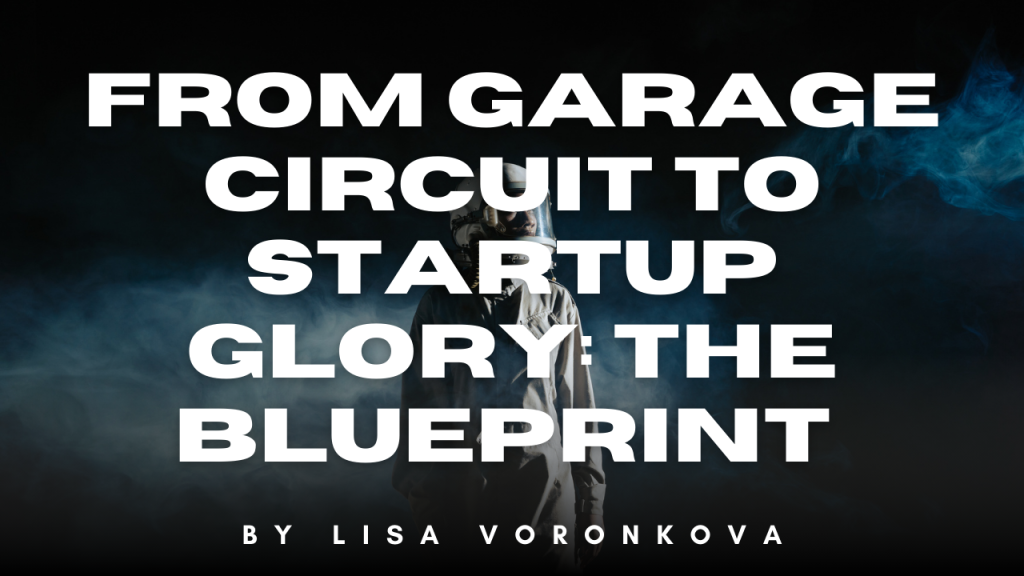In the competitive landscape of medical and wellness device development, crafting an electronic prototype that captures investor interest is both an art and a science. This guide will walk you through every step, ensuring that your electronic prototype not only functions flawlessly but also tells a compelling story about its market potential, scalability, and impact.
Table of Contents
Why an Electronic Prototype is Crucial
An electronic prototype serves as the bridge between an idea and a market-ready product. It validates the concept, showcases functionality, and provides tangible proof of your vision’s feasibility. For medical and wellness devices, where safety and precision are paramount, a prototype is even more critical—it must demonstrate compliance with industry standards while addressing real-world needs.
Investors aren’t just funding ideas; they’re backing proven concepts with clear paths to profitability. A well-crafted electronic prototype can make or break your pitch.
Here’s a long, comprehensive spreadsheet of niche industry knowledge with pro tips for “The Ultimate Guide to Building an Electronic Prototype That Investors Love”:
| Category | Insight/Knowledge | Pro Tip |
|---|---|---|
| Concept Validation | Start with a clear problem statement to ensure the electronic prototype solves a real need. | Conduct surveys with your target audience to validate demand before investing in prototyping. |
| Component Selection | Choose components that are readily available and scalable for production. | Avoid components with long lead times; opt for widely-used parts to prevent supply chain issues. |
| PCB Design | PCB layout impacts functionality and manufacturability. | Use high-speed PCB design principles to reduce signal interference in medical devices. |
| Firmware Development | Firmware defines how the device operates and interacts with users. | Write modular firmware to simplify debugging and future updates. |
| Ergonomic Design | Focus on user comfort and ease of operation. | Use 3D-printed prototypes to test grip and usability before committing to final materials. |
| Rapid Prototyping | Iterative prototyping speeds up development and reduces errors. | Use SLA 3D printing for high-detail parts and FDM for structural testing to save time and costs. |
| Connectivity | IoT-enabled devices require robust connectivity for seamless data transmission. | Use dual-band Wi-Fi modules to ensure stable connections in medical environments with high interference. |
| Power Management | Efficient power systems are critical for portable devices. | Include a sleep mode in firmware to conserve battery life during idle periods. |
| Sensor Integration | Ensure sensors are calibrated for accuracy and reliability. | Use temperature-compensated sensors to maintain accuracy across environmental conditions. |
| Material Selection | Material choice affects durability, safety, and manufacturability. | Use biocompatible materials for wearable or implantable devices. |
| Heat Dissipation | Electronic devices often face overheating issues. | Integrate heat sinks or thermal pads into your design to prevent overheating. |
| Regulatory Requirements | Medical devices must comply with strict standards like FDA 510(k) and CE marking. | Start with a regulatory checklist to design compliance into the prototype from the beginning. |
| Prototyping Tools | Use industry-standard tools like CAD software and simulation programs. | Utilize Altium Designer for PCB development and SolidWorks for mechanical design. |
| User Feedback | Early feedback from users provides insights for improvement. | Set up user testing groups to gather qualitative data on usability and functionality. |
| Environmental Testing | Ensure the prototype can withstand real-world conditions like temperature, humidity, and vibrations. | Use environmental chambers to simulate extreme conditions during testing. |
| Prototyping Costs | Prototyping can become expensive without proper planning. | Use a milestone-based budgeting system to track and control costs throughout the prototyping process. |
| Manufacturing Feasibility | Design for manufacturability to ensure a smooth transition to production. | Work with manufacturing engineers early to identify potential production bottlenecks. |
| Integration with Software | Hardware and software integration is critical for IoT and connected devices. | Use APIs and cloud platforms like AWS IoT to test real-time data transmission between hardware and apps. |
| Risk Assessment | Identify potential failure points in the prototype early on. | Use FMEA (Failure Mode and Effects Analysis) to prioritize risks and address them proactively. |
| Aesthetics | A visually appealing prototype can make a strong impression on investors. | Work with an industrial designer to refine the look and feel of the device. |
| Scalability | Ensure the prototype design can be scaled to mass production efficiently. | Design with modularity in mind to make scaling easier and less costly. |
| Data Security | For connected devices, data security is non-negotiable. | Use encryption protocols like AES-256 to secure sensitive medical data. |
| Documentation | Keep thorough documentation of the design, tests, and modifications. | Use cloud-based tools like Notion or Jira to organize and share documentation with the team. |
| Investor Communication | Investors value prototypes that tell a clear story. | Develop a compelling pitch deck that highlights the prototype’s features, market potential, and roadmap. |
| Prototyping Timeline | Time delays in prototyping can affect investor confidence. | Set realistic timelines and update stakeholders regularly on progress. |
| Testing and Validation | Testing ensures the prototype meets technical and regulatory standards. | Partner with certified testing labs for functional, environmental, and regulatory testing. |
| Lifecycle Management | Plan for updates and end-of-life scenarios for the device. | Incorporate OTA (Over-the-Air) updates to allow firmware improvements post-production. |
| Sustainability | Investors increasingly value sustainable and eco-friendly designs. | Use recyclable materials and energy-efficient components in the prototype. |
| Market Trends | Stay updated on trends in medical and wellness devices to remain competitive. | Attend industry conferences and subscribe to journals like MedTech Dive for insights. |
| Team Collaboration | Prototyping requires input from diverse experts. | Use collaborative platforms like Slack or Monday.com to streamline team communication and task tracking. |
Step 1: Define the Purpose of Your Electronic Prototype
Before diving into development, clarify the purpose of your electronic prototype. In medical and wellness devices, prototypes generally fall into these categories:
- Proof of Concept (PoC):
Demonstrates basic functionality and validates the technical feasibility of your idea.
Example: A wearable heart monitor prototype that tracks heart rate. - Functional Prototype:
Showcases the complete functionality and user interaction.
Example: A diabetes management device with an integrated app. - Pre-Production Prototype:
Mimics the final product in form and function, ready for regulatory testing.
Example: A compact ventilator ready for FDA submission.

Step 2: Assemble the Right Team
Your team should have expertise in the following areas:
- Hardware Engineering: To design circuits, PCBs, and mechanical components.
- Embedded Software Development: For programming firmware and enabling device functionality.
- Industrial Design: To ensure ergonomic and aesthetic appeal.
- Regulatory Compliance Experts: To navigate FDA, ISO, or MDR requirements.
Pro Tip: Partner with experienced R&D firms like OVA Solutions, which specialize in medical and wellness devices. Their expertise in developing over 150 devices ensures streamlined prototyping processes.
Step 3: Select the Right Components
Component selection can significantly impact your electronic prototype’s functionality, cost, and scalability.
- Microcontrollers and Processors: Choose based on power consumption, speed, and expandability.
- Sensors: Opt for high-precision sensors that meet medical-grade standards.
- Power Sources: Select reliable batteries or power systems that align with your device’s usage profile.
- Connectivity Modules: Consider Bluetooth, Wi-Fi, or IoT capabilities for smart devices.
Pro Tip: Source components from reputable suppliers to avoid quality issues during scaling.
Step 4: Design for Manufacturability (DFM)
Many startups overlook DFM, resulting in prototypes that are expensive or impossible to scale.
- Simplify the Design: Minimize the number of unique components to reduce assembly complexity.
- Optimize for Testing: Include test points on PCBs to facilitate quality control.
- Use Modular Components: Modular designs allow for easy upgrades and repairs.
Pro Tip: Work with manufacturers early in the design phase to ensure a smooth transition from prototype to production.
Step 5: Create a User-Centric Design
Investors are drawn to devices that prioritize the end-user experience. For medical and wellness devices, this often means balancing functionality with usability.
- Ergonomics: Ensure the device is comfortable and easy to use.
- Aesthetics: A visually appealing design enhances marketability.
- Intuitive Interfaces: Simplify user interaction through clear instructions and intuitive controls.
Case Study: When developing a smart pill dispenser for opioid management, we at OVA Solutions conducted user testing to refine the device’s interface, leading to increased adoption rates.

Step 6: Validate Through Testing
Testing is critical to ensure your prototype meets technical and regulatory standards.
- Functional Testing: Verify that all components and features work as intended.
- Environmental Testing: Test durability under extreme conditions (e.g., temperature, humidity).
- User Testing: Collect feedback from real users to identify areas for improvement.
- Regulatory Testing: Begin aligning with standards like FDA 510(k) or CE marking.
Pro Tip: Use specialized testing labs for medical devices to ensure compliance and reliability.
Step 7: Presenting Your Prototype to Investors
A compelling prototype presentation combines technical excellence with a strong narrative.
- Demonstrate the Problem: Highlight the pain points your device solves.
- Showcase the Solution: Demonstrate the functionality of your prototype with live demonstrations or videos.
- Market Potential: Provide data on market size, growth trends, and competitive advantages.
- Scalability Plan: Show how the prototype can transition to mass production.
Developing an electronic prototype that captivates investors is a multifaceted process, especially in the medical and wellness device sectors. It requires a harmonious blend of innovative design, regulatory compliance, and strategic planning. For a comprehensive understanding of this journey, our article, Prototype to Production: Lider Hardware Companies Are Crushing in 2025, Why?, delves into the methodologies leading hardware companies employ to excel in bringing prototypes to market. Additionally, for insights specific to optical medical devices, refer to The Ultimate Guide to Optical Medical Device Commercialization in 2025. These resources provide valuable perspectives that can enhance your approach to developing investor-ready electronic prototypes.
Common Pitfalls to Avoid
- Overengineering: Avoid adding unnecessary features that complicate development and increase costs.
- Neglecting Compliance: Early integration of regulatory requirements saves time and money.
- Ignoring Feedback: User and investor feedback is invaluable for refining your prototype.
Future Trends in Electronic Prototyping
The medical and wellness device industry is rapidly evolving. Stay ahead by leveraging:
- AI Integration: Use AI for diagnostics, predictive analytics, and device optimization.
- Sustainable Design: Focus on eco-friendly materials and energy-efficient components.
- Wearable Technologies: Develop compact, lightweight devices for continuous monitoring.
For further insights into best practices and common pitfalls in electronic prototyping, consider exploring Cygnus Corp’s guide on prototyping your electronics project. This resource offers valuable perspectives that can enhance your approach to developing investor-ready electronic prototypes.
Conclusion
Building an electronic prototype that investors love is about more than just technical execution—it’s about telling a story of innovation, scalability, and market potential. By following the steps outlined in this guide, you can craft a prototype that not only impresses but also secures the funding needed to bring your vision to life.
If you’re looking for expert guidance in medical and wellness device development, reach out to OVA Solutions. With a track record of over 150 successful prototypes, we’re here to help you turn your idea into reality.




 430 Park Ave, New York, NY 10022, USA
430 Park Ave, New York, NY 10022, USA Paevalille tn 6, Office 84, Estonia, Tallinn, 13517
Paevalille tn 6, Office 84, Estonia, Tallinn, 13517 Barykadna St 7, Dnipro, Ukraine, 49000
Barykadna St 7, Dnipro, Ukraine, 49000